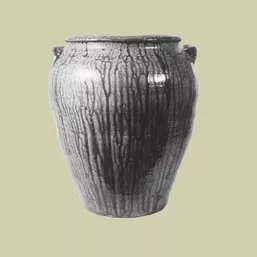Since the first kilns were built by Spaniards on the South Carolina coast in the late 1500s, pottery has played an essential role in American life. People depended less on store-bought goods and the traditional potter occupied a significant position in the social and economic structure of the American family. Crocks, churns, jugs, pitchers, and storage jars were necessities and wherever clays were suitable, local farmers learned to use the clay to turn ware.
By the beginning of the twentieth century, many of the potteries across the nation closed as they yielded to the overwhelming competition of mass-produced crockery and the appeal of materials like glass and graniteware. The survival of many southern potteries is a result of the region’s rural nature and the slow pace of development after the Civil War.
Southern folk pottery is generally produced by individual potters working in small shops instead of large factory production lines. Turned by hand on the wheel, folk pottery is distinct from “studio” pottery executed in the more self-conscious and internationally connected ceramic styles. Early southern folk pottery was primarily functional, rarely embellished with decorative additions. Folk pottery in America has evolved over the past three hundred years from British and German traditions with a healthy mixture of Asian, Native American, and African influences.
Folk pottery is community-based with foundations built on strong family connections. The names associated with southern pottery - Meaders, Brown, Smith - come from family potting traditions several generations deep. Traditional pottery is a fundamental American art form and with historical threads unbroken in the South, one of the region’s most important cultural contributions

